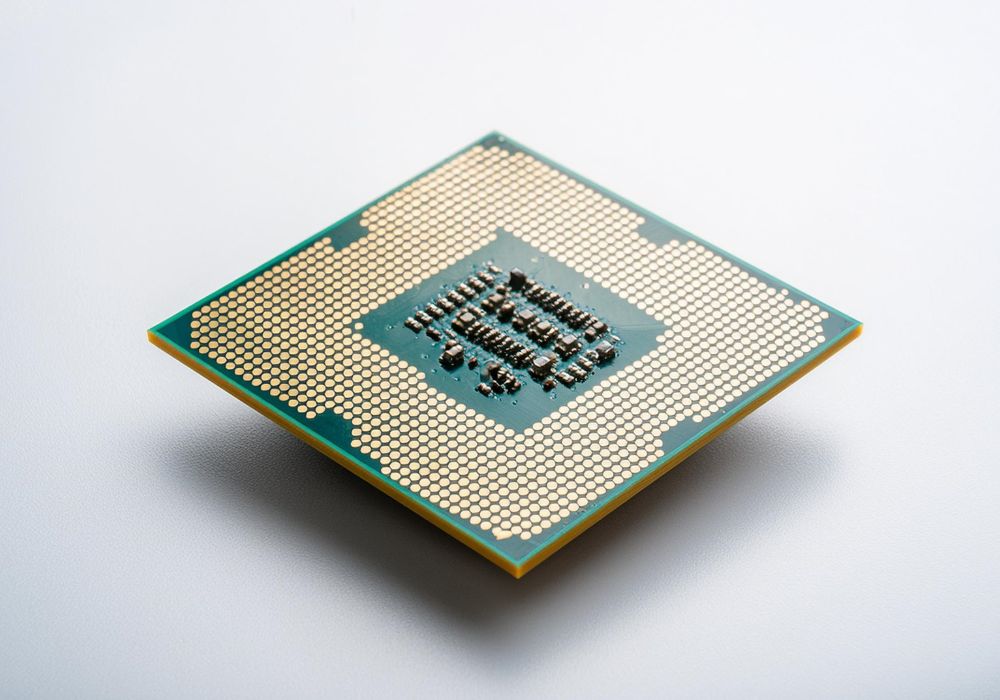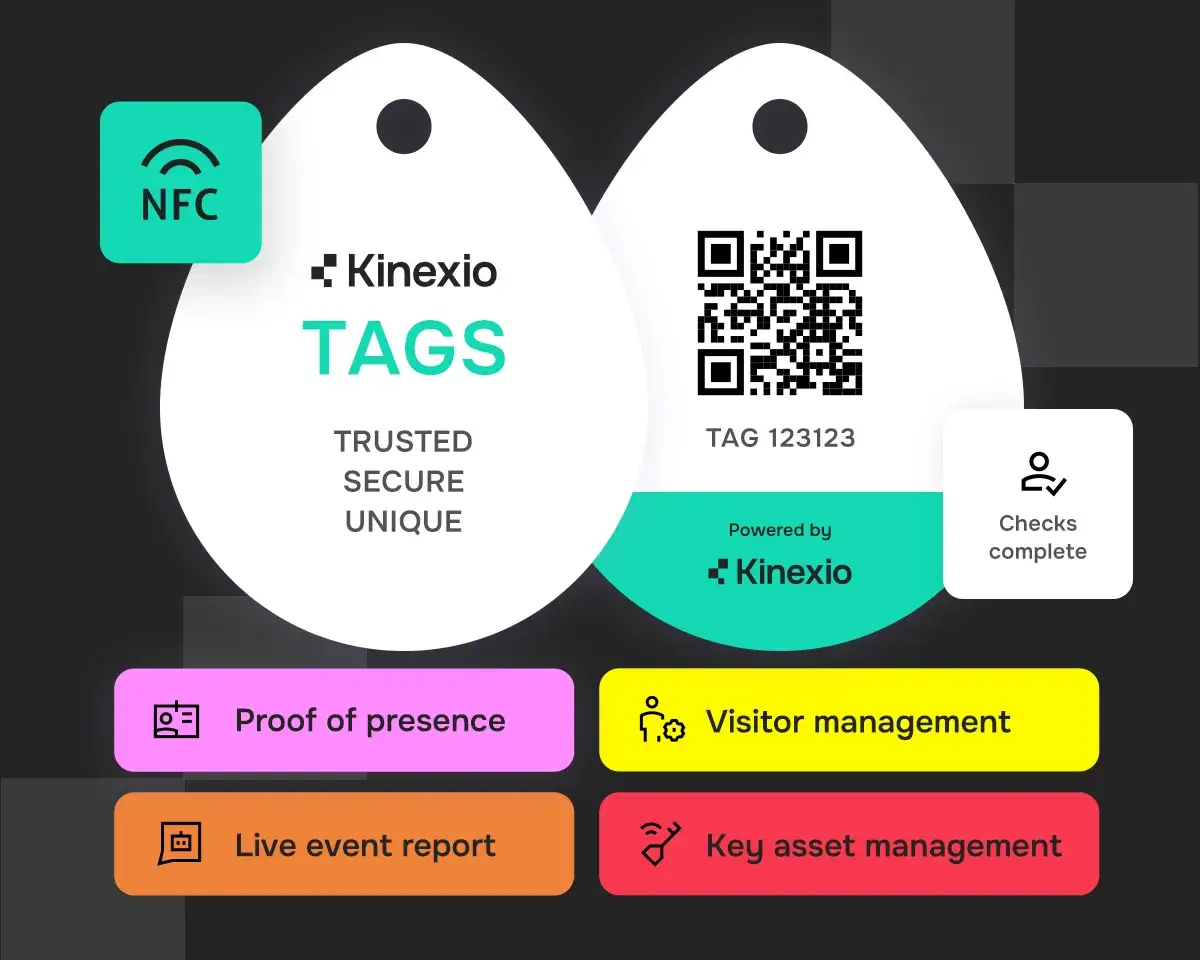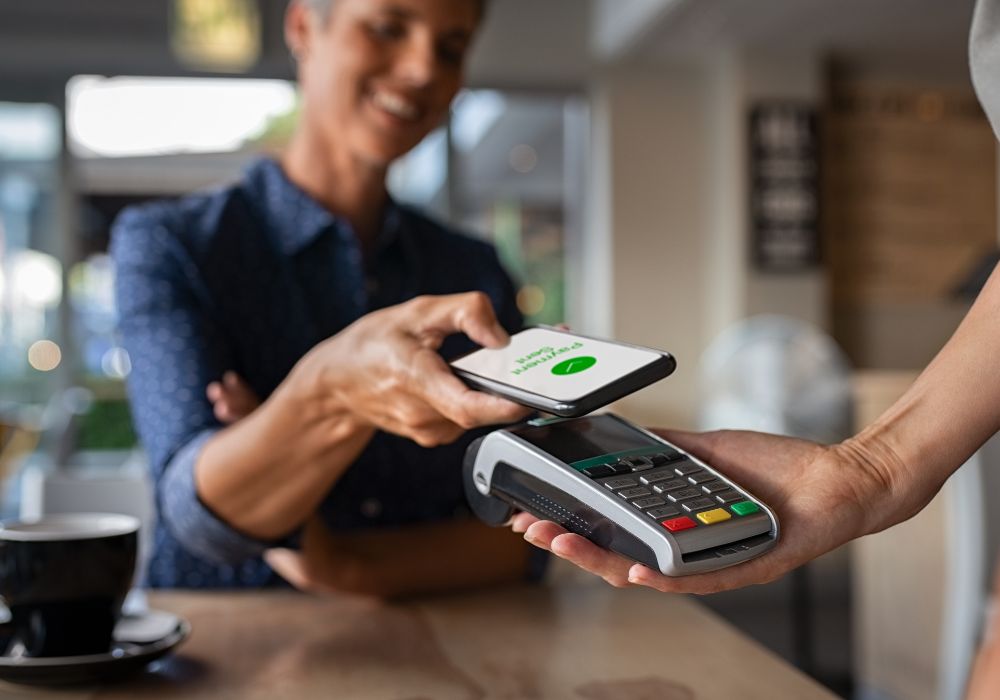Short answer: Standard tags fail to provide cryptographic security. Trusted near field communication tags (like Kinexio’s patented NFC tags) add strong, chip‑level authentication, tamper awareness and cloud verification so every tap is genuine, traceable and auditable. Put simply, trusted NFC taps can’t be faked.
What is the difference between trusted near field communication tags and standard NFC tags?


Written by Andy Jarrett
MD, Kinexio (previously from MyTAG)

How NFC tags work: NFC technology, NDEF tag & ISO 14443 basics
Most near field communication tags are tiny passive chips that talk to a phone, or NFC enabled device. They typically store an NDEF tag message (e.g., a URL) the NFC reader reads and opens instantly. Compatibility comes from standards like ISO/IEC 14443 (proximity cards/tags) and the NFC Forum’s data formats.
Where standard NFC tags fall short (cloning, spoofing and MIFARE Classic issues)
Basic NFC tags (e.g., NTAG213/215 or similar Type 2 tags) are designed to be freely readable. NFC technology that doesn’t use cryptographic authentication, their data (or even the tag’s identifier) can be copied to a look‑alike tag, so a tap can’t reliably prove that the object or place is authentic. MIFARE Classic uses the outdated Crypto-1 cipher, which was broken years ago, hence they’re not recommended for trust‑critical journeys.
What makes Kinexio’s patented trusted NFC security tags different?
Kinexio’s secure, trusted NFC tags are built for verifiable, operational outcomes, not just link launching – perfect NFC security tags.
- Unclonable identity: Each tag carries a unique, cryptographically protected identity.
- Tap‑unique challenge/response: Each tap generates a cryptographically signed, one-time value.
- Cloud verification: Kinexio verifies each tap in real time and applies timestamp and location, returning a result instantly.
- Full audit history: Outcomes appear on auditable dashboards with long‑term retention.
- Works offline: In no‑signal environments, taps cache with integrity checks and auto‑upload later.
- Lifecycle control: Centrally provision, revoke or retire tags at will.
- Standards compliance: Tags comply with ISO/IEC 14443 and NFC Forum data formats.
- Form factors: Stickers, keyfobs, cards, asset labels, and ID badges to match operations.
These behaviours are enabled by secure chips that do on‑tag cryptography and return a tap‑unique, signed value inside the URL. See below.
NXP NTAG 424 DNA datasheet (AES‑128, SUN/SDM), NXP AN12196 – NTAG 424 DNA features & hints.
Inside the chip: NTAG213, NTAG215 and NTAG 424 — which NFC tag is right for you?
When you’re comparing tag families, it helps to map needs to chip capabilities:
NTAG213 / NTAG215
Affordable NFC tags for simple consumer journeys (open a URL, launch an app). No on‑chip crypto authentication; suitable for low‑risk use cases.
NTAG 424 DNA (and 424 DNA TagTamper)
Type 4 tags with AES‑128 cryptography and a Secure Dynamic Message (a unique, signed value per tap). Perfect for trusted and traceable actions where you must authenticate the tag and event.
Tamper‑evident
These variants (e.g., NTAG213 TT, NTAG 424 DNA TagTamper) add a breakable loop so you can tell if packaging was opened; the chip stores that “opened” state and can mirror it into the NDEF message.

Kinexio trusted NFC tags are just a step away
NFC tags are quick, easy and cost effective solution for proof of presence, asset tracking and compliance.
Visit the Kinexio NFC tags page for more information.

Why “tap‑to‑trust” matters: NFC adoption & user behaviour
In the UK, contactless tap behaviour is now the norm: in recent monthly figures, contactless accounted for ~77% of debit card transactions and ~67% of credit card transactions. That habitual “tap” motion makes NFC‑powered interactions intuitive — if you can trust the tap.
Trusted near field communication tags vs standard NFC tags: feature comparison
| Capability | Standard NFC tags (e.g., NTAG213/215) | Trusted NFC tags (Kinexio, e.g., NTAG 424 DNA) |
|---|---|---|
| Cryptographic authentication | X – NONE | Y – AES‑128 challenge/response (tap‑unique signed data) |
| Anti-cloning | X – Data can be duplicated | Y – URL contains per‑tap proof tied to the original chip |
| Tamper awareness | ! – Only with special TT variants | Y – Available with TagTamper plus cryptographic proof |
| Offline behaviour | ! – Depends on app | Y – Cached taps with integrity checks; auto‑upload |
| Audit trail | X – Not inherent | Y – Timestamped, geo‑contextual dashboards |
| Lifecycle control | ! – Limited (lock bits) | Y – Provision, revoke, retire centrally |
| Standards | Y – NFC Forum / ISO/IEC 14443 | Y – NFC Forum / ISO/IEC 14443 plus strong security |
NFC tags vs QR codes: when to NFC tap and when to QR scan
Trusted NFC tags vs QR codes is less “either/or” and more “right tool, right job.” QR codes are visible and cheap; NFC tags are discrete, durable and can prove authenticity with secure chips.
- Use QR when: – You need a visible call‑to‑action on posters or screens – Camera‑only user journeys are preferred
- Use NFC when: – You want one‑tap speed and great UX (no camera app) – You need on‑tag cryptography to stop spoofing and prove origin – You want tamper evidence (e.g., packaging, warranty labels). E.g. NFC proof of presence
Real‑world use cases: NFC Proof of Presence, NFC Asset Tracking
NFC Proof of presence
Kinexio replaces paper patrol logs with secure NFC tags, delivering NFC Proof of Presence through real-time, tamper-proof scans. Each tap is logged with timestamp, user ID and exact location, ensuring accountability across every shift. Operatives use their smartphones or rugged scanners, even in low-signal areas using the Deadzone offline app. Whether you’re managing security patrols, cleaning rounds or building inspections, Kinexio ensures no checkpoint is missed and every action is recorded for audit.
NFC Asset tracking
Track valuable assets across your site with NFC asset tracking designed for ease and accuracy. Kinexio tags enable tap-in, tap-out logs for tools, equipment or shared devices, complete with timestamps and user verification. Know exactly who last used an item, when, and where. Receive alerts when assets go overdue, and trigger maintenance workflows automatically. This reduces loss, improves utilisation, and creates a full usage history across your asset estate – visible in real time from your dashboard.
FAQ
Are NFC tags secure?
Standard tags aren’t; they lack cryptography. Kinexio’s patented and trusted near field communication tags use secure chips (e.g., NTAG 424) to return a signed, tap‑unique value your server can verify.
Can NFC tags be cloned?
The data on basic tags can be duplicated. With NTAG 424 and cloud verification, a copied URL won’t validate, so clones fail. Attempts to copy the data result in invalid responses, since the cryptographic proof can’t be reproduced.
Do iPhone and Android read NFC tags?
Yes. Modern iOS and Android phones read NFC tags natively; secure flows work without a dedicated app when using signed URLs (Type 4/NDEF).